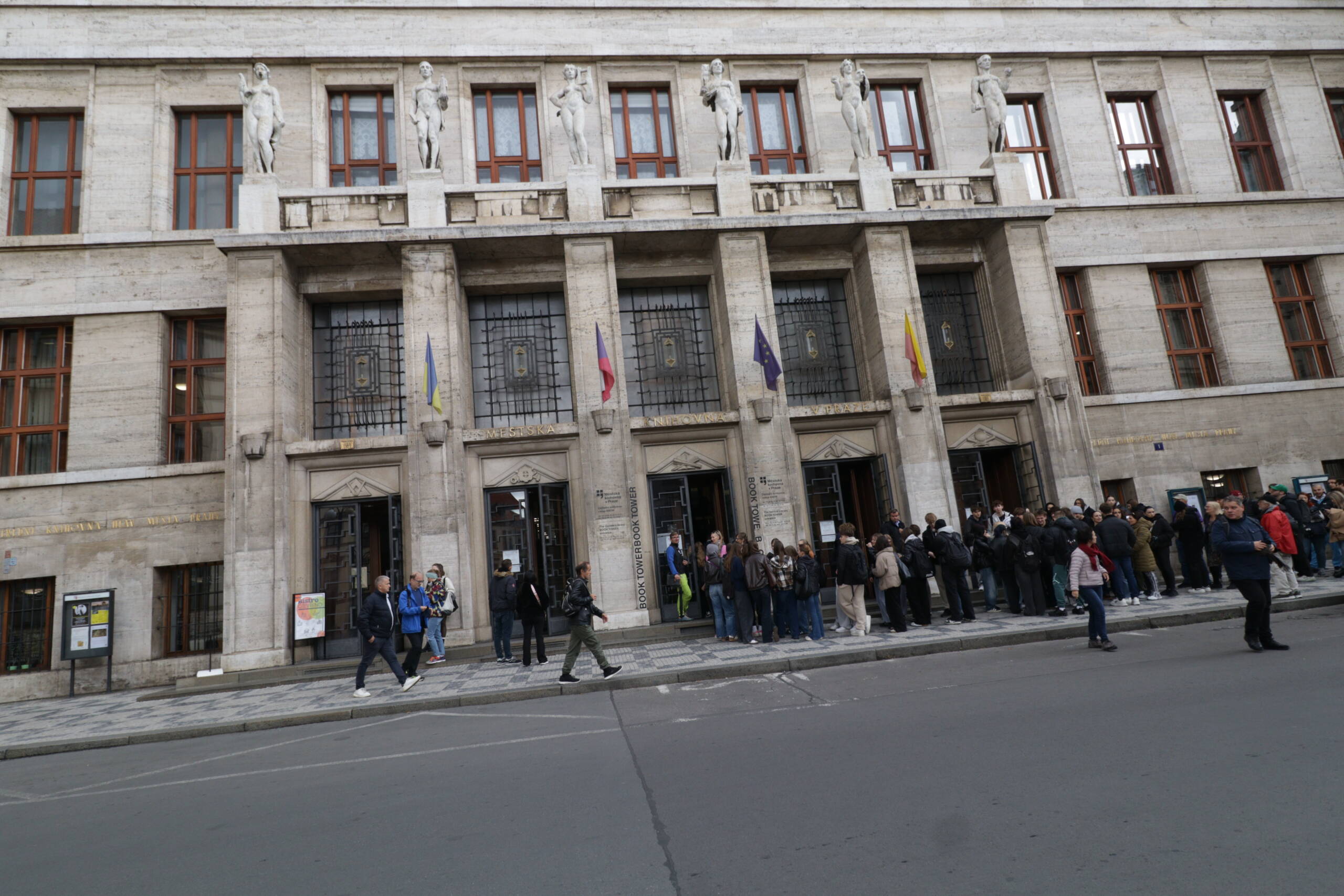There’s a particular kind of letdown that comes with discovering that something promising on the surface turns out to be just another tourist funnel. The building in the image is the Prague Municipal Library (Městská knihovna v Praze), a striking 1920s structure designed in the neoclassical style, adorned with heroic statues and geometric symmetry that speaks to the civic confidence of early 20th-century Czechoslovakia. It stands just off Mariánské náměstí, near the old town’s elegant web of medieval lanes — close enough to draw the curious crowds wandering from the Charles Bridge or the Astronomical Clock.

But on this particular day, the façade’s solemnity contrasts sharply with the reality on the ground. A long queue snakes down the pavement, full of visitors with phones raised and cameras ready. They’re not here for books, culture, or even the architecture. They’re here for that photo — the famous “Idiom Installation”, also known as the infinite book tunnel — an optical illusion by Slovak artist Matej Krén, built of thousands of stacked books that seem to spiral endlessly into a mirrored void. The problem is that this illusion, mesmerizing in photos, lasts about five seconds in real life. You peer into the hole, see the endless column of pages, snap your selfie, and that’s it. The entire experience is over before your brain even processes it, leaving you standing awkwardly amid a mass of tourists doing the exact same thing.
The irony, of course, is that the real beauty of the library lies not in that viral installation but in the building itself — its sandstone solidity, its rational proportions, its silent reading halls lined with warm wooden details and floor-to-ceiling windows that bathe the rooms in soft daylight. The façade, with its muscular stone figures representing allegorical virtues, was intended to express humanistic ideals — the belief that education and culture uplift society. Today, though, those ideals are obscured by the endless churn of selfie-seekers who rush through the doorway without even realizing what the building represents.
Outside, people wait in line not for knowledge but for a photograph. There’s a subtle melancholy in that scene — the transformation of a place meant for contemplation into a backdrop for fleeting validation. You can sense a quiet frustration among locals passing by, the same weary acceptance that accompanies any landmark caught between civic heritage and digital fame. It’s the paradox of modern tourism: accessibility erodes authenticity, and the more a site is photographed, the less it’s experienced.
So yes — calling it a tourist trap isn’t wrong. The illusion is beautiful, clever even, but it’s not worth the wait, especially in a city where nearly every corner offers genuine wonder. Step outside and within five minutes you can lose yourself among baroque spires, gothic vaults, or the calm of Klementinum’s courtyards. Prague rewards curiosity and wandering far more than queuing. The library’s marble columns and statues will remain, dignified and patient, watching over yet another crowd mistaking spectacle for meaning.
Leave a Reply